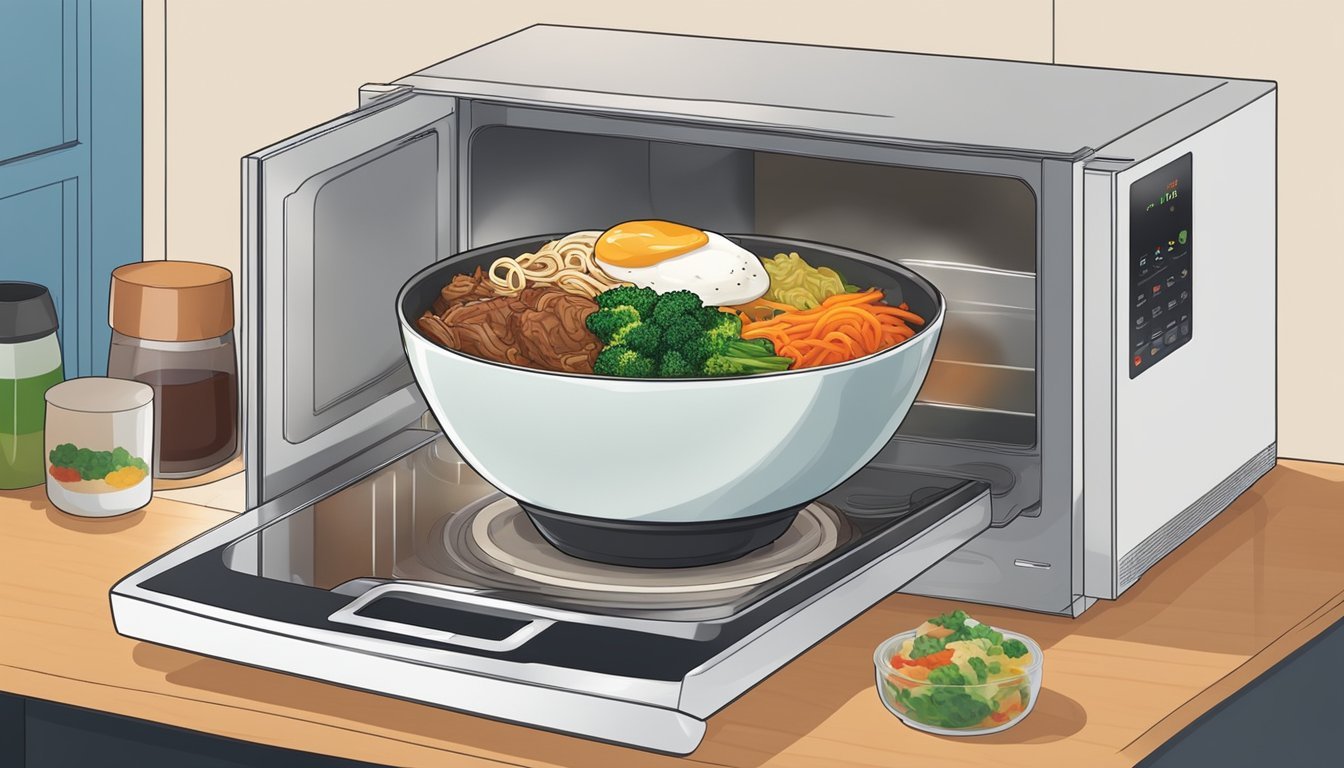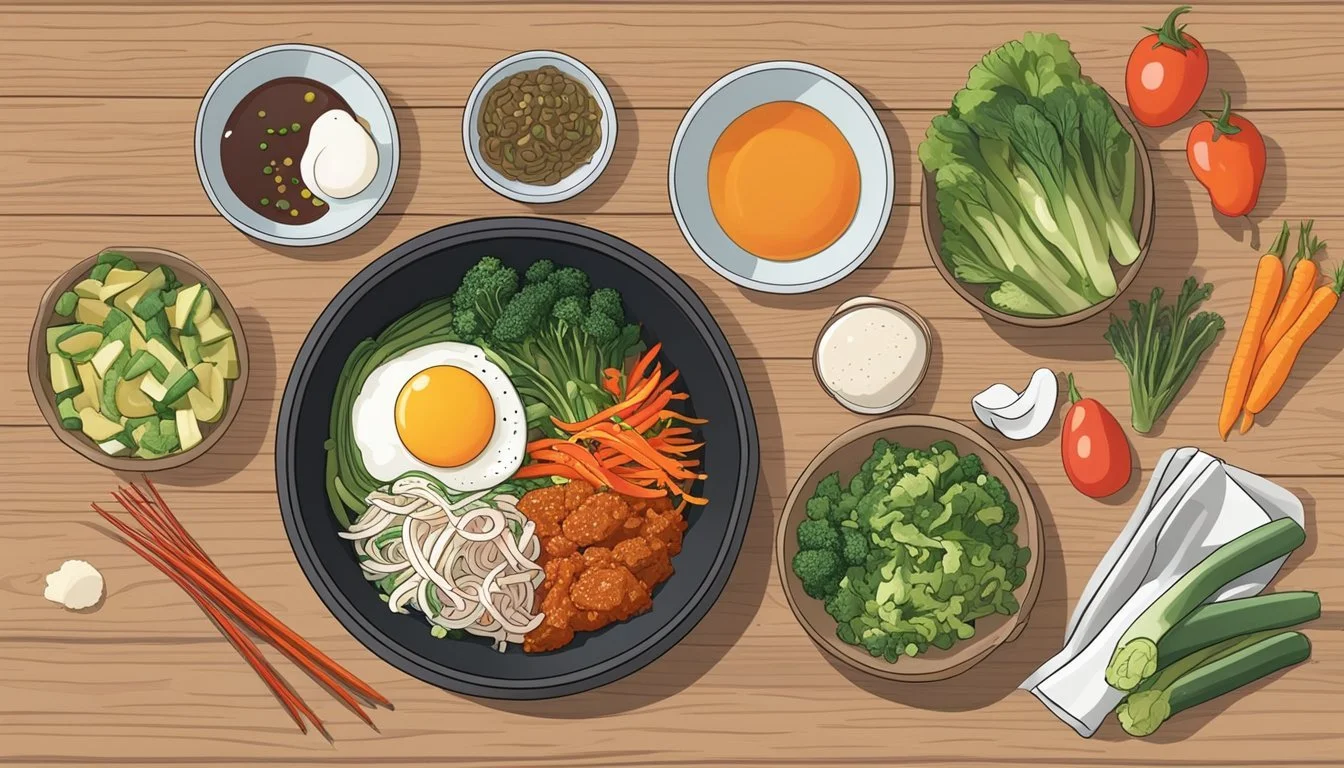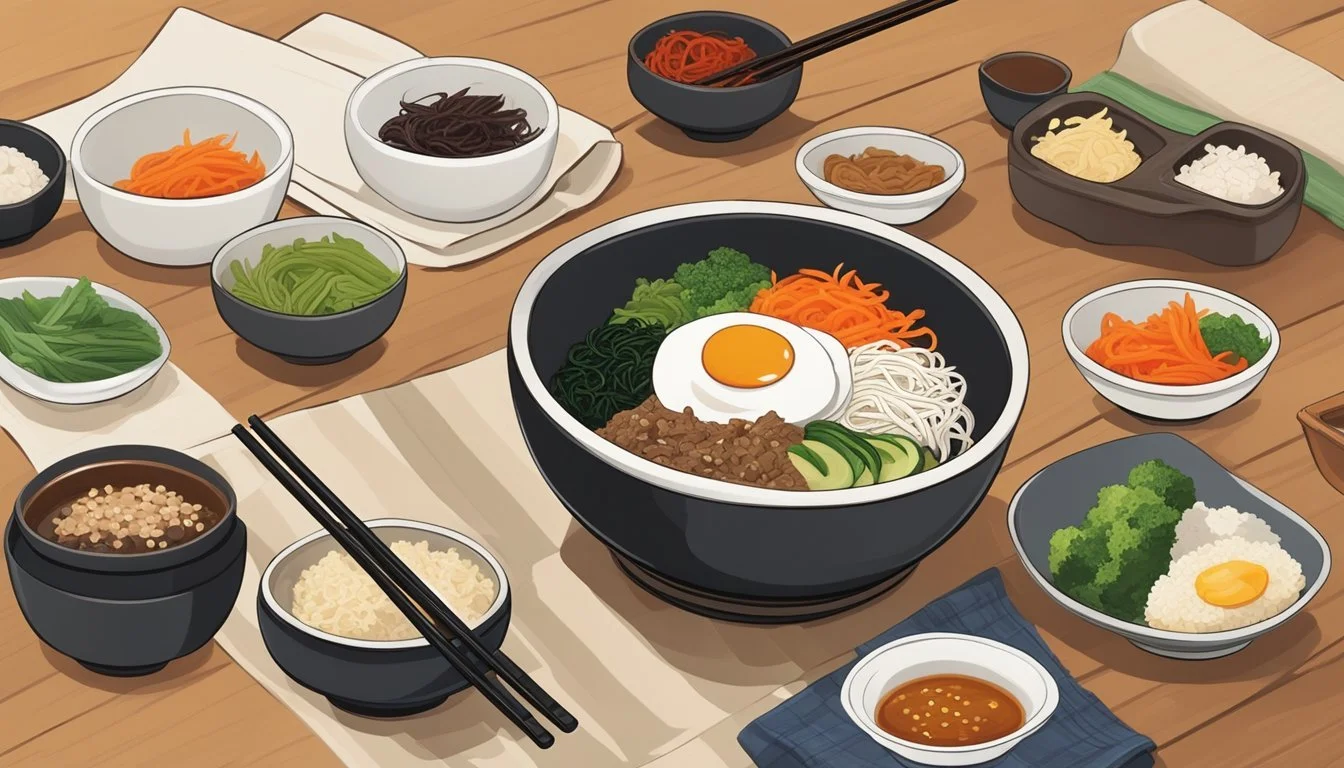How to Reheat Bibimbap
Best Techniques for Preserving Flavor
Reheating bibimbap, a popular Korean dish, can be a challenge if you want to maintain its delicious flavors and textures. The best methods to reheat bibimbap while keeping its integrity involve using either the microwave or the oven. In the microwave, place the bibimbap in a microwave-safe bowl and cover it with a damp paper towel. This step helps preserve the moisture of the rice and vegetables during the heating process.
Alternatively, the oven method works exceptionally well for reheating larger portions. Preheat your oven to 350°F (175°C), transfer the bibimbap to an oven-safe dish, and spread it out evenly to ensure even heating. This method provides a gentle and steady heat, helping to retain the savory gochujang flavor in the dish. Both methods ensure the optimal enjoyment of the rice, vegetables, meat, and egg components of the bibimbap.
For an authentic bibimbap experience, stirring frequently is key. This practice ensures that the heat distributes evenly, which is essential for achieving perfectly crispy rice and well-heated vegetables and meat. Whether you use the microwave or the oven, these techniques will allow you to savor the traditional and mouthwatering taste of this beloved Korean dish.
Understanding Bibimbap
Bibimbap is a signature dish in Korean cuisine that features a harmony of flavors and textures. The key elements include rice, fresh vegetables, proteins, and various seasonings that contribute to a balanced diet and rich taste.
Components of Bibimbap
Bibimbap primarily consists of steamed rice often made from Korean rice. The dish is topped with an assortment of fresh vegetables such as spinach, carrots, zucchinis, and bean sprouts. Proteins vary depending on dietary preferences and can include beef, chicken, tofu, or egg. Common seasonings used are gochujang sauce, soy sauce, and sesame oil.
Additional elements like seaweed and kimchi are often included to enhance flavor and provide variety. Dolsot bibimbap refers to bibimbap served in a hot stone pot, which creates a desirable crispy rice layer at the bottom.
Significance in Korean Cuisine
Bibimbap holds great cultural significance in Korea. Historically, it was a practical and ingenious way to use leftover ingredients, ensuring no waste. The dish represents harmony and balance, combining elements that cater to both taste and nutritional needs.
In Korea, bibimbap is not merely food, but an experience. It symbolizes a balanced diet as it includes carbohydrates, proteins, and a variety of vegetables. The communal aspect of sharing and assembling bibimbap makes it a popular meal in social gatherings. Its versatility allows it to cater to different dietary preferences, whether vegetarian or non-vegetarian.
Variations of Bibimbap
There are numerous variations of bibimbap catering to personal and regional preferences. Vegetarian options are popular, excluding meat but often including tofu for protein. Each variation might highlight a unique combination of ingredients and sauces.
Jeonju bibimbap is renowned for its use of royal culinary traditions. Unlike typical versions, it uses specific vegetables and seasoning mixtures. Hoe-deopbap is another variation, incorporating raw fish, akin to a Korean-style sashimi bowl. Such variations showcase the adaptability of bibimbap to different flavors and textures, further solidifying its place in both traditional and modern Korean cuisine.
Preparation Before Reheating
Proper preparation is essential for reheating bibimbap correctly. This involves ensuring that the leftovers are stored correctly and taking specific steps before starting the reheating process.
Storing Leftover Bibimbap
Storing bibimbap properly is key to maintaining its taste and texture. Use an airtight container to keep the freshness intact and prevent moisture loss. Separate the different ingredients when possible to ensure they reheat evenly.
Refrigeration: Place the container in the fridge if you plan to consume the bibimbap within a couple of days. This keeps it safe to eat and preserves its flavors.
Freezing: For longer storage, opt for the freezer. Make sure to add an extra layer of protection like foil or an additional sealed bag to prevent freezer burn. Label the container with the date for tracking purposes.
Pre-Reheating Tips
Before reheating, certain steps will help maintain the texture and moisture of the bibimbap.
Moisture Retention: Use a damp paper towel to cover the bibimbap. This prevents the rice from drying out.
Separating Ingredients: If stored together, separate ingredients such as vegetables and proteins from the rice. This allows for even heating.
Temperature Adjustment: Allow the bibimbap to come to room temperature before reheating. This reduces the cooking time and helps in even heating.
Containers: Use a microwave-safe bowl if microwaving or a heat-resistant dish for the oven to ensure safety and even reheating.
Following these steps will help you achieve the best results when reheating bibimbap, ensuring it remains delicious and retains its original character.
Reheating Bibimbap Methods
When reheating bibimbap, maintaining its flavor, texture, and moisture is essential. Various methods cater to these needs, such as using a microwave for speed and convenience, an oven for a crispy texture, or a stovetop for even heating.
Microwave Reheating
Microwave reheating is ideal for those who want a quick and easy solution. First, transfer the leftover bibimbap into a microwave-safe bowl. To retain moisture and avoid drying out, add a teaspoon of water if the dish appears dry. Cover the bowl with a damp paper towel, ensuring it touches the rice. Microwave at full power in 30-second intervals, stirring between each to ensure even heating. Repeat until the desired temperature is reached. This method is convenient and quick but requires attention to avoid overheating.
Oven Reheating
For a crispier texture, use an oven. Preheat the oven to 350°F (175°C). Place the bibimbap in an oven-safe dish, spreading it out evenly to allow for uniform reheating. To further enhance its flavor, drizzle a bit of sesame oil over the top. Cover the dish with aluminum foil to prevent moisture loss. Bake for 15-20 minutes, checking periodically to ensure the bibimbap doesn't dry out. This method helps achieve a crispy texture while preserving the dish's authentic flavors.
Stovetop Reheating
Using a skillet or wok on the stovetop is another effective method. Heat a small amount of vegetable oil over medium heat. Add the leftover bibimbap, spreading it evenly in the pan. Stir frequently to prevent sticking and to ensure even heating. For added moisture, drizzle a small amount of water or sesame oil over the bibimbap. Continue to heat for 5-7 minutes until it reaches the desired temperature. This method can provide a crispy rice texture, especially if using a non-stick skillet. It's perfect for those who prefer a hands-on approach to reheating.
Post-Reheating Care
After reheating bibimbap, it’s essential to enhance the texture and flavor of the dish with appropriate toppings and serve it in a way that maintains its freshness. These adjustments ensure the meal remains appetizing and true to the essence of Korean cuisine.
Topping and Seasoning
Enhancing reheated bibimbap involves adding fresh toppings and seasonings. Green onions can be finely chopped and sprinkled over the dish to provide a crisp, fresh bite. A fried egg on top not only adds richness but also ensures the meal feels heartier.
Sesame seeds, both toasted and untoasted, can be scattered for a nutty flavor and added texture. Consider adding a dollop of gochujang (Korean chili paste) for a spicy kick. Season lightly with salt, sugar, and pepper to bring all the flavors together. This combination revives the dish, making it taste just-made.
Serving Suggestions
Bibimbap shines when served in one bowl, which is traditional in Korean cuisine. To make the presentation appealing, arrange the reheated rice and vegetables neatly. If paired with side dishes, kimchi and pickled radishes are excellent choices that complement the main dish’s flavors.
Serving bibimbap with a fresh soup, such as miso soup, can add a comforting, warm element to the meal. For added freshness, offer a side of seaweed salad or cucumber slices. These pairings retain the flavor and freshness of the dish, making it a delightful experience.
Safety and Health Considerations
When reheating bibimbap, it is essential to prioritize food safety to avoid any potential health risks. One of the key factors is ensuring the dish reaches a safe reheating temperature. All parts of the bibimbap should reach at least 165°F (74°C) to kill any harmful bacteria that may have developed during storage.
Leftover food guidelines recommend refrigerating bibimbap within two hours of cooking. Store it in airtight containers to prevent contamination. It's best to consume refrigerated leftovers within 3-4 days. For longer storage, bibimbap can be frozen and safely reheated.
To prevent uneven heating, stir or mix the bibimbap between reheating intervals, especially when using a microwave. This helps distribute heat more evenly and ensures all ingredients reach the safe temperature.
While reheating, avoid using high heat settings for extended periods. High heat can degrade certain nutrients and may result in an unpleasant texture. Lower heat settings, used consistently, help maintain the quality and nutritional value of the ingredients.
Always inspect leftover bibimbap before reheating. Discard it if any unpleasant odors, unusual textures, or visible mold are present.
Proper reheating techniques and attention to detail ensure that enjoying bibimbap remains both safe and delicious. By following these guidelines, you can savor this Korean dish with confidence.
Enhancing Bibimbap Flavors Post-Reheating
Elevate your reheated bibimbap by incorporating additional sauces, seasonings, and fresh ingredients. Balance flavors inspired by Korean cuisine to ensure a delightful dining experience.
Choosing Additional Sauces and Seasonings
Enhancing the flavor of reheated bibimbap can be easily achieved with the right sauces and seasonings. Soy sauce adds a subtle umami profile that pairs well with the dish. Sesame oil offers a nutty aroma and richness. Garlic and ginger can heighten the intensity of flavors, giving the bibimbap a fresh and vibrant taste.
Consider adding bibimbap sauce, which typically consists of gochujang (Korean red chili paste), sesame oil, sugar, and sometimes garlic. This combination brings a balance of heat and sweetness that complements the other elements of the dish. Adjust the quantity according to personal preference for spiciness and sweetness.
Fresh Ingredients Add-Ons
Incorporating fresh ingredients post-reheating can rejuvenate the bibimbap and provide a crisp texture. Fresh vegetables like julienned carrots, sliced cucumbers, and bean sprouts (known as namul) can add crunch. Wilted vegetables can be replaced to maintain quality and flavor. Fresh spinach or chopped scallions can also enhance the overall taste.
Adding proteins such as freshly cooked steak slices or a fried egg can bring additional depth and heartiness. These elements not only enhance the flavor but also make the meal more satisfying. For vegetarian options, consider marinated tofu as an excellent umami-rich protein source.





